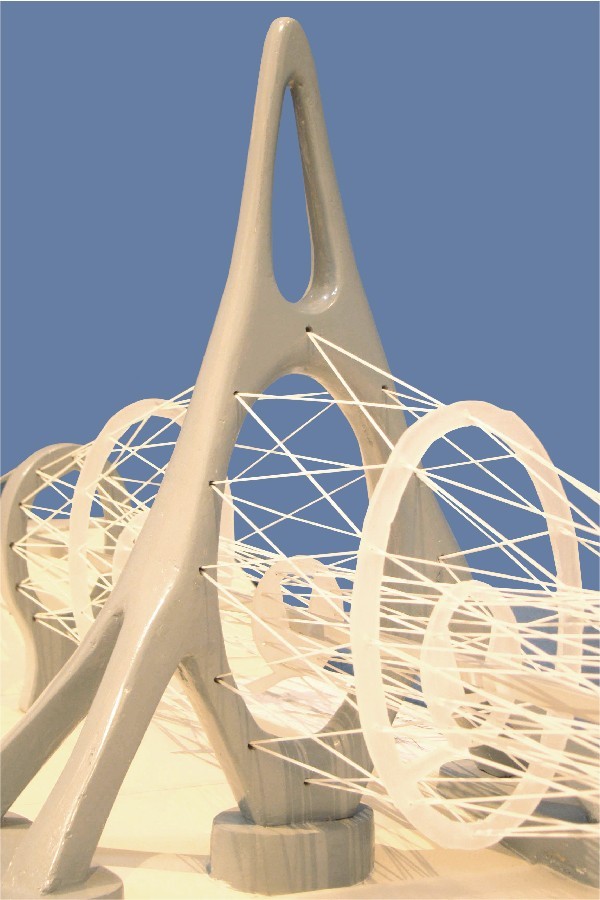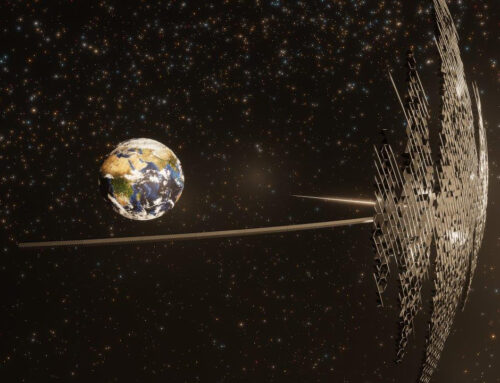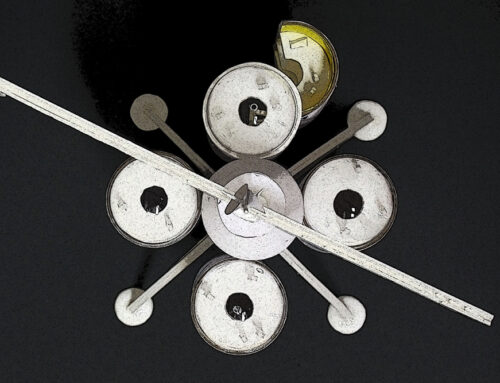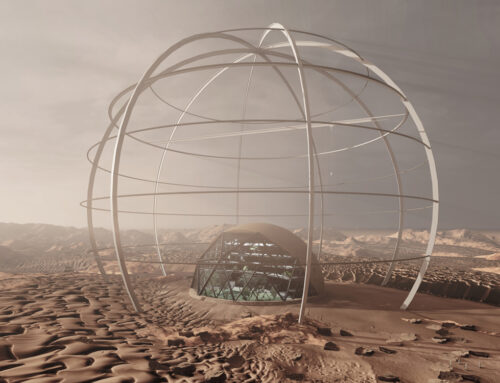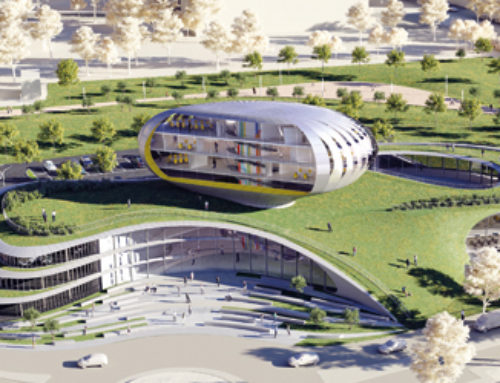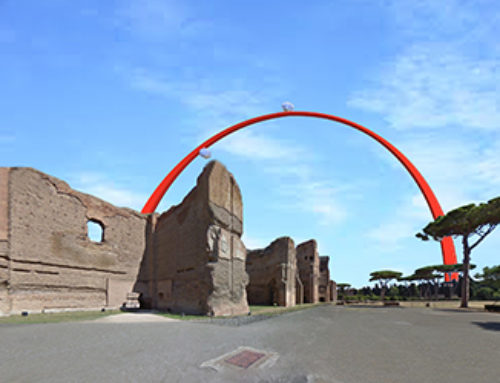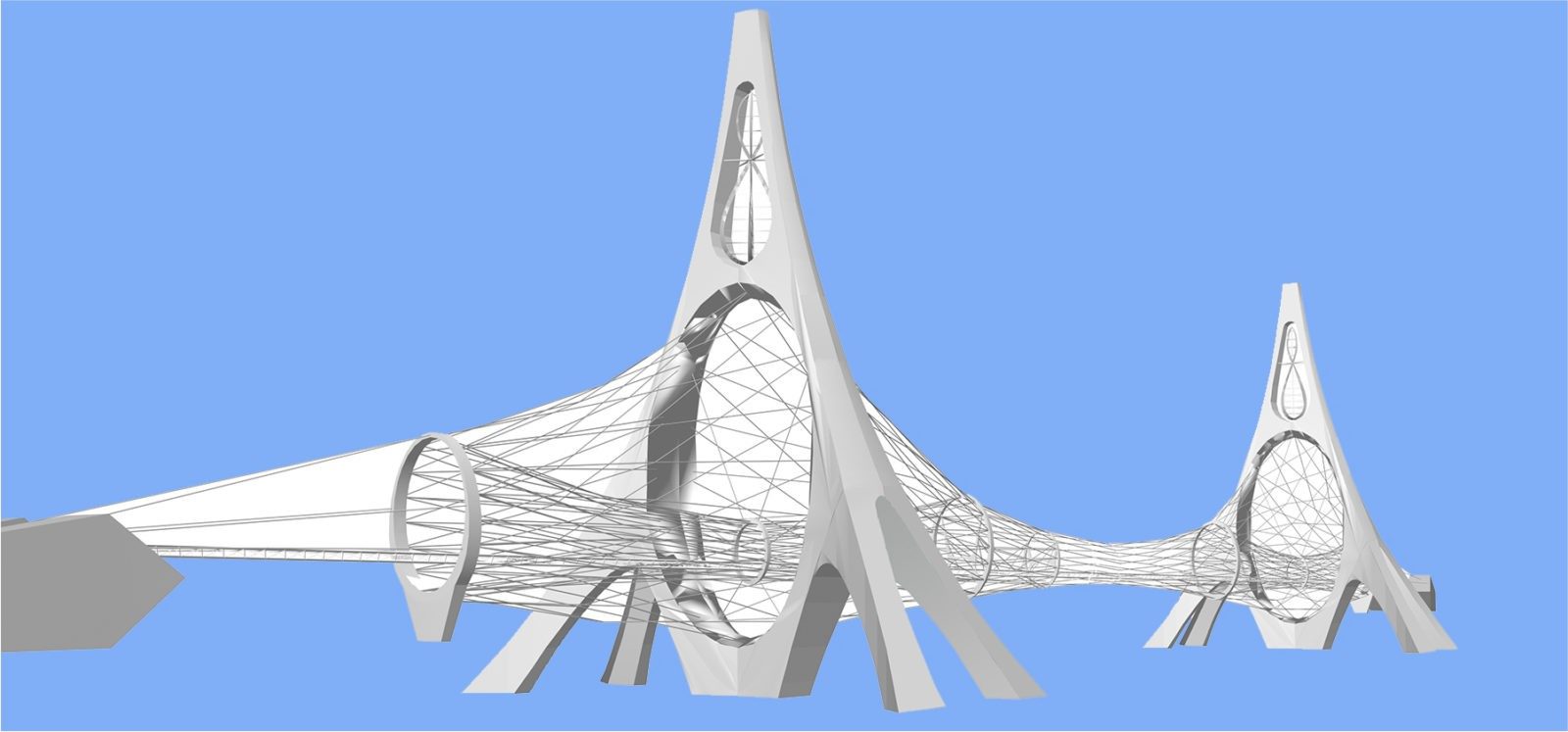
Description of the project
This research project for a crossing over the Strait of Gibraltar (which is currently one of the most ambitious yet unachieved engineering challenges) is a testimony of our interest towards long-span suspended bridges.
Marco Peroni has been studying these structures since 1991, when he analysed Sergio’s Musmeci proposal for a bridge on the Strait of Messina (1969) with a software as part of his thesis project in Engineering (under the supervision of Massimo Majowiecki).
Even though in the last decades unprecedented goals have been achieved in the field, no real structural innovations have been introduced alongside the classical double-rope load system with a more or less rigid deck.
For the concept of a Bridge on the Strait of Gibraltar, most studies contemplate a two-spans structure (each span 5 kilometres long) with classical load systems that still lead to constructive schemes of the late 19th century.
Our project aim to pass over the Strait with a single 10-kilometer span, supported by two 2000-meter high towers laid on solid seabeds and not-deep waters.
For our design we took inspiration from Musmeci’ ideas regarding a tensile-structured bridge, turning the original rope system into a three-dimensional hyperboloid enclosed around the deck.
Thanks to this innovative structural scheme and the use of carbon-fibre cables, the framework will be light in weight but still sufficiently strong: the cable weaving has in fact a supporting and stabilizing effect at the same time.
Our research has gained considerable interest in the engineering field and has been dedicated many publications, including an article by the Italian architectural magazine Domus.
The project was presented during numerous national and international events (London, Budapest, Zurich, Venice), including the Long Span Bridges conference at the University of Tor Vergata in 2010. In occasion of this event we built and verified a scale-model of the bridge with a nonlinear analysis using the sofware Midas Gen.
Category:
Studies and researches
Year:
2006-2016
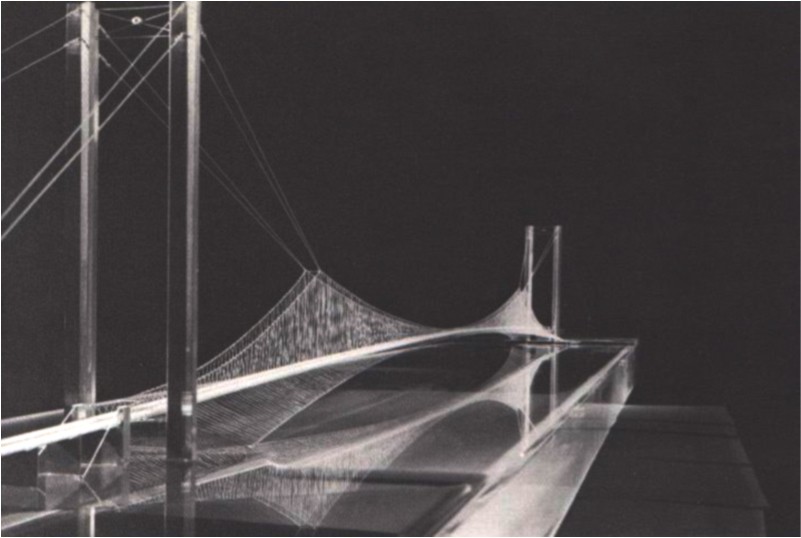
Model of Sergio Musmeci’s for a bridge over the Strait of Messina.
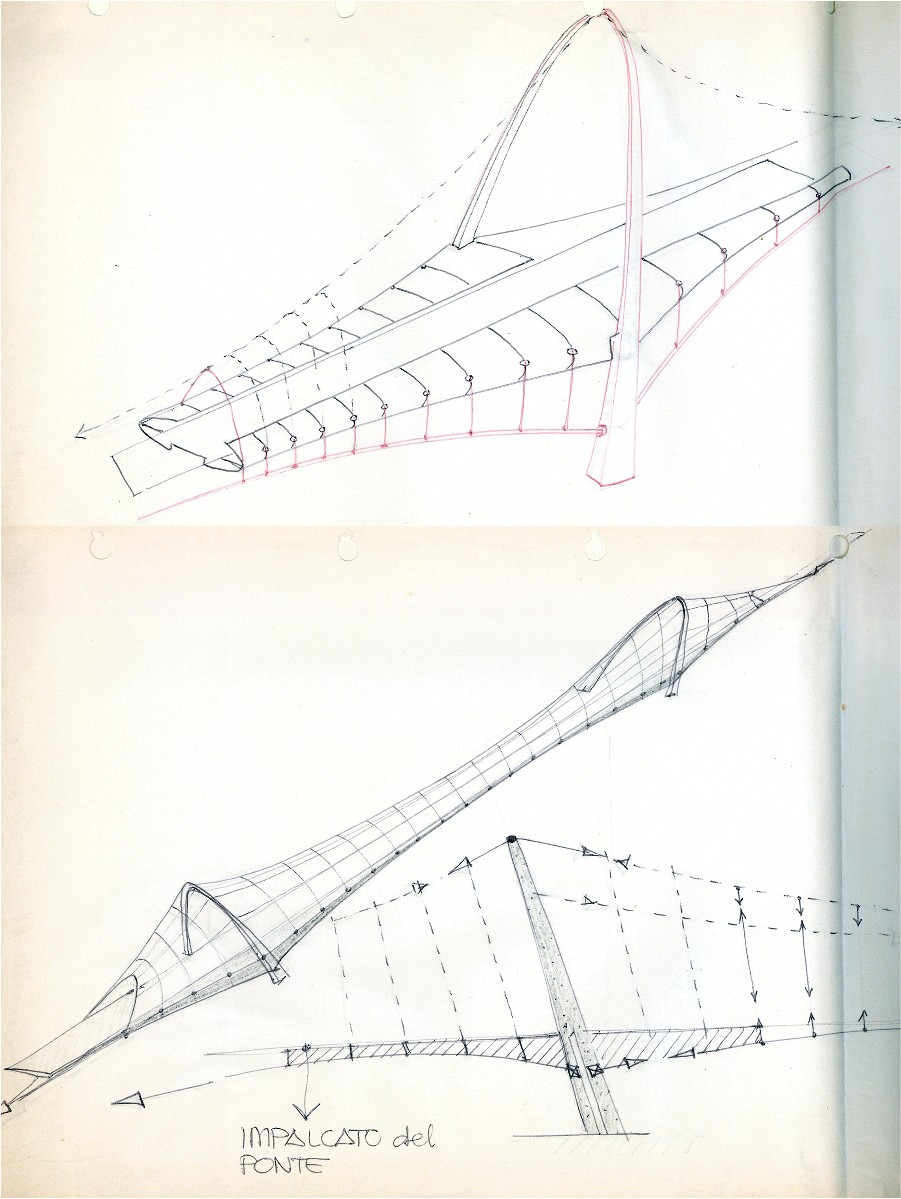
Marco Peroni’s sketches for a rope net bridge, early 90s.
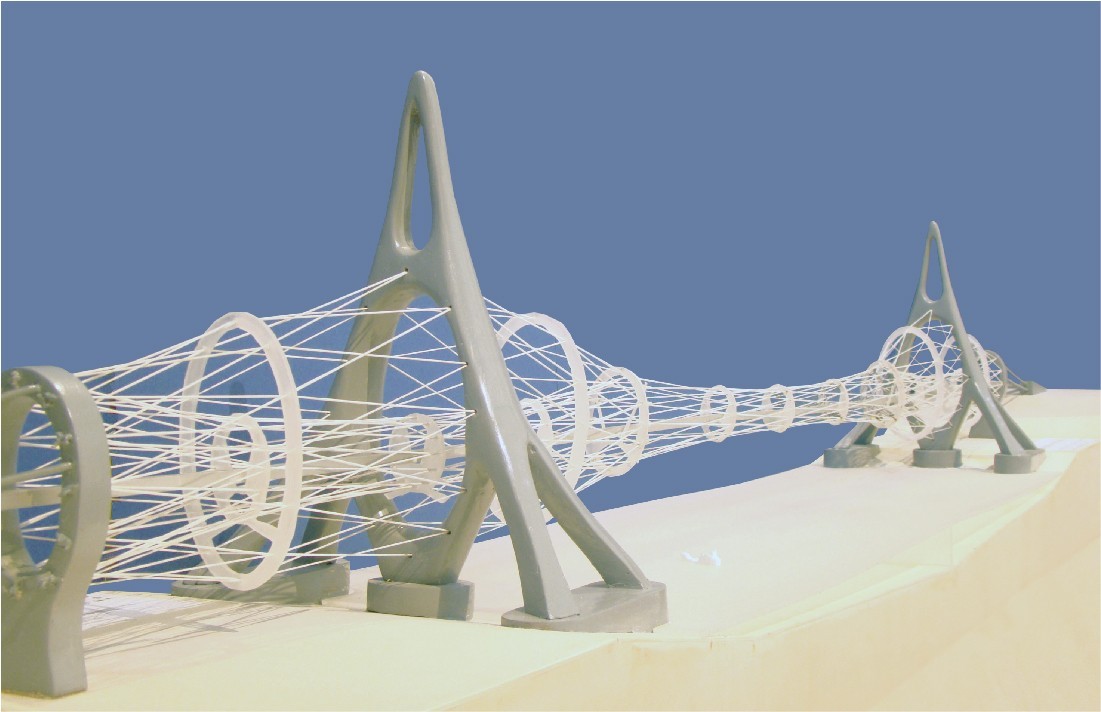
Details of the bridge’s scale model (3 metres long).
